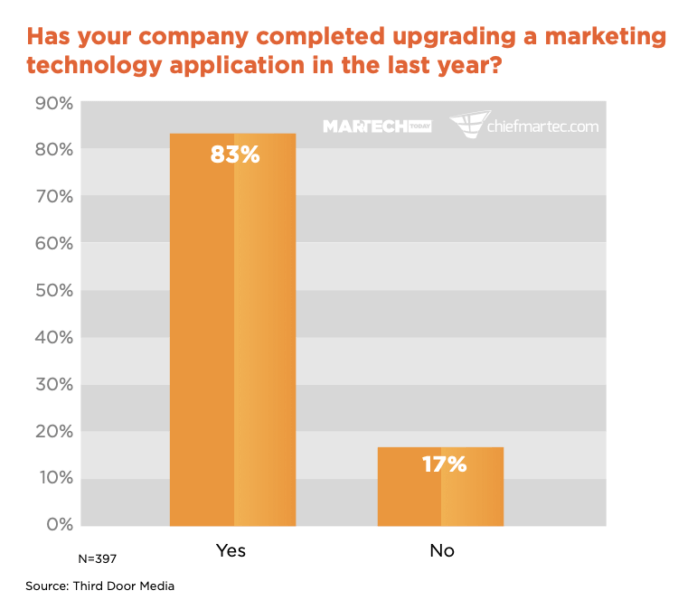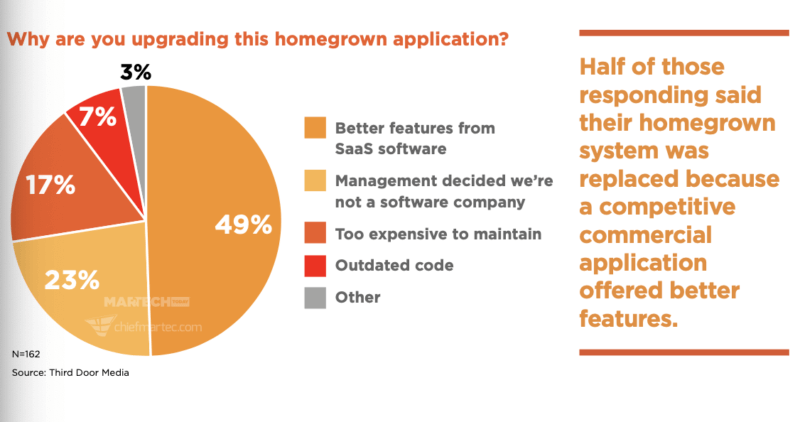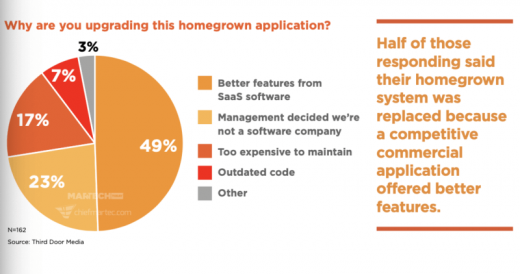MarTech Replacement Survey finds marketing transformation is accelerating
While the pandemic made cost a major factor, marketers did hold back on replacing key elements of their marketing technology stacks.
Ever since we coined the phrase “MarTech is marketing” in 2019, it has only become clearer to us that the art of building brand, prospects and customers today cannot be separated from the tools we use to power those activities. But it’s also clear that the pace of transformation is leading marketers to continually evaluate their tech stacks as platforms add features and new tools emerge that enable marketers to create, integrate and orchestrate better than before.
The first MarTech Replacement Survey in 2019 showed just how frequently marketing organizations replaced technology. The survey found homegrown platforms were often displaced by commercial, out-of-the-box applications. This had a direct effect on hiring, as most respondents said they had recruited new teams to run the platforms they were installing.
Since then, the COVID-19 pandemic has gripped the world, forcing us more closely to embrace digital operations. We know that many digital-first businesses thrived during the pandemic, but questions remained about how the disruption of the past year-and-a-half affected marketing technology decisions.
This year’s report, the result of a survey fielded through April and May of 2021, answers several of those questions.
Of the 374 marketers who answered our survey, 252 told us they replaced a marketing technology application in the past year, representing 67% of respondents. For the most part, organizations were upgrading from one commercial solution to another — and the upgraded solutions were exactly the kinds of technologies you’d expect given how digital transformation picked up during the pandemic.
This year’s MarTech Replacement Survey found that marketers and their organizations:
- Replaced a wide range of marketing tools
- Sought technology with better features and lower costs
- Looked to improve their data management capabilities
- Saw replacement decisions championed by senior and executive leadership
- Retained and retrained talent to manage these new tools
In the past 18 months, marketers also invested in exactly those tools which support digital engagement with prospects and customers. And when asked if the replacements were driven by pandemic-related considerations, the response was divided.
The data highlighted in this report show that the pace of technology-driven transformation was not slowed by the pandemic. If anything, it picked up speed.

Organizations are moving away from in-house solutions. In a striking find, many companies are migrating away from marketing technologies developed in-house. Respondents were nearly as likely to have upgraded or replaced a homegrown technology (49%) as a commercially available solution (51%), with many of those replacing homegrown tech moving to commercial applications.
The number one reason marketers said they shifted from in-house technology was that available SaaS software had better features, with 49% of those who switched to a commercial solution citing that as a reason.

Nearly one in four said their homegrown system was being replaced because management decided their enterprise was “not a software company,” and nearly one in five because their homegrown system was too expensive to maintain.
The post MarTech Replacement Survey finds marketing transformation is accelerating appeared first on MarTech.
(29)



